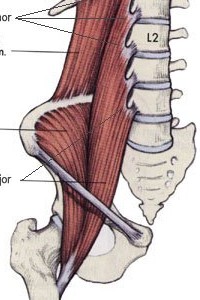For decades, fitness professionals have advised against straight-legged sit-ups due to their tendency to cause lower back pain. But what about lying or hanging leg raises? They seem to mimic the same movement, just in reverse. Are they engaging the same muscles, and could they be contributing to back pain?
Understanding Muscle Mechanics
To grasp why leg raises might not be the best exercise for your abs, it's crucial to understand basic biomechanics. Muscles contract when their attachment points move closer together, and they stretch when these points move further apart. Every muscle has an opposing counterpart that must also be trained for joint stability and injury prevention.
Consider the bicep: when you curl your arm, the muscle contracts as the endpoints move closer together. When you straighten your arm, the bicep stretches. The same principle applies to all muscles, including those involved in leg raises.
The Problem with Leg Raises
The primary muscle responsible for raising the legs is not the abs, but the psoas (hip flexor). The psoas originates at the lower spine and attaches to the upper thigh. When activated, it pulls the legs upward. However, because of its spinal attachment, tight or overworked psoas muscles can pull on the lower back, leading to discomfort and even chronic pain. By contrast, the rectus abdominis (the "six-pack" muscle) attaches at the lower ribs and runs down to the pubic bone. Its primary function is to flex the spine, not to lift the legs. This means that unless you're curling your pelvis upward past 90 degrees during a leg raise, your abs aren’t fully engaged.
Are You Really Training Your Abs?
To test whether leg raises truly engage your abs, lie flat on your back with one hand on your pubic bone and the other on your lower ribs. Slowly raise your legs to 90 degrees. Did your hands move closer together? Likely not. This confirms that the hip flexors, not the abs, are doing the work.
Now, try a reverse crunch by curling your pelvis toward your ribs. This time, your hands will move closer together, demonstrating genuine abdominal engagement. If you want to effectively train your abs without straining your lower back, reverse crunches and traditional crunches are far better options than leg raises.
How Leg Raises Contribute to Back Pain
Repeatedly engaging the hip flexors through leg raises can lead to muscle tightness, pulling on the lumbar spine and increasing the risk of pain and postural issues. This effect is exacerbated by prolonged sitting, which already shortens and tightens the hip flexors. Over time, imbalances develop, leading to discomfort and a heightened risk of injury. Even bending your knees or placing your hands under your lower back does not eliminate the issue. The first 90 degrees of any leg raise primarily recruit the hip flexors. Unless you’re actively curling your pelvis toward your chest, you’re not fully engaging the abs.
Better Alternatives for Ab Training
If your goal is a strong, sculpted core without back pain, focus on exercises that minimize hip flexor dominance:
1. Reverse Crunches: Lie on your back, bring your knees toward your chest, and curl your pelvis upward. This movement directly engages the rectus abdominis.
2. Planks: A static but powerful core exercise that strengthens the entire abdominal region while promoting spinal stability.
3. Hanging Knee Raises: Unlike full leg raises, bent-knee variations reduce strain on the hip flexors and encourage better ab activation.
4. Dead Bugs: A great exercise for core engagement and coordination, reducing unnecessary strain on the lower back.
Understanding proper biomechanics is key to achieving fitness goals without injury. While leg raises may seem like a staple in ab workouts, they primarily engage the hip flexors rather than the abs. This can contribute to muscle imbalances, lower back pain, and postural issues over time. Instead, prioritize movements that directly target the abdominal muscles while maintaining spinal alignment.
For optimal core development and injury prevention, reconsider leg raises in your routine. By focusing on exercises that genuinely engage your abs, you'll build a stronger, pain-free core and avoid setbacks in your fitness journey.
Sources:
- Recent studies in sports medicine and rehabilitation have confirmed the role of hip flexor dominance in lower back pain.
- Biomechanics textbooks emphasize the importance of muscle balance in preventing injuries.
- Research on core stabilization highlights the efficacy of alternative exercises like planks and reverse crunches.













